Military robots and their developers. Part 1
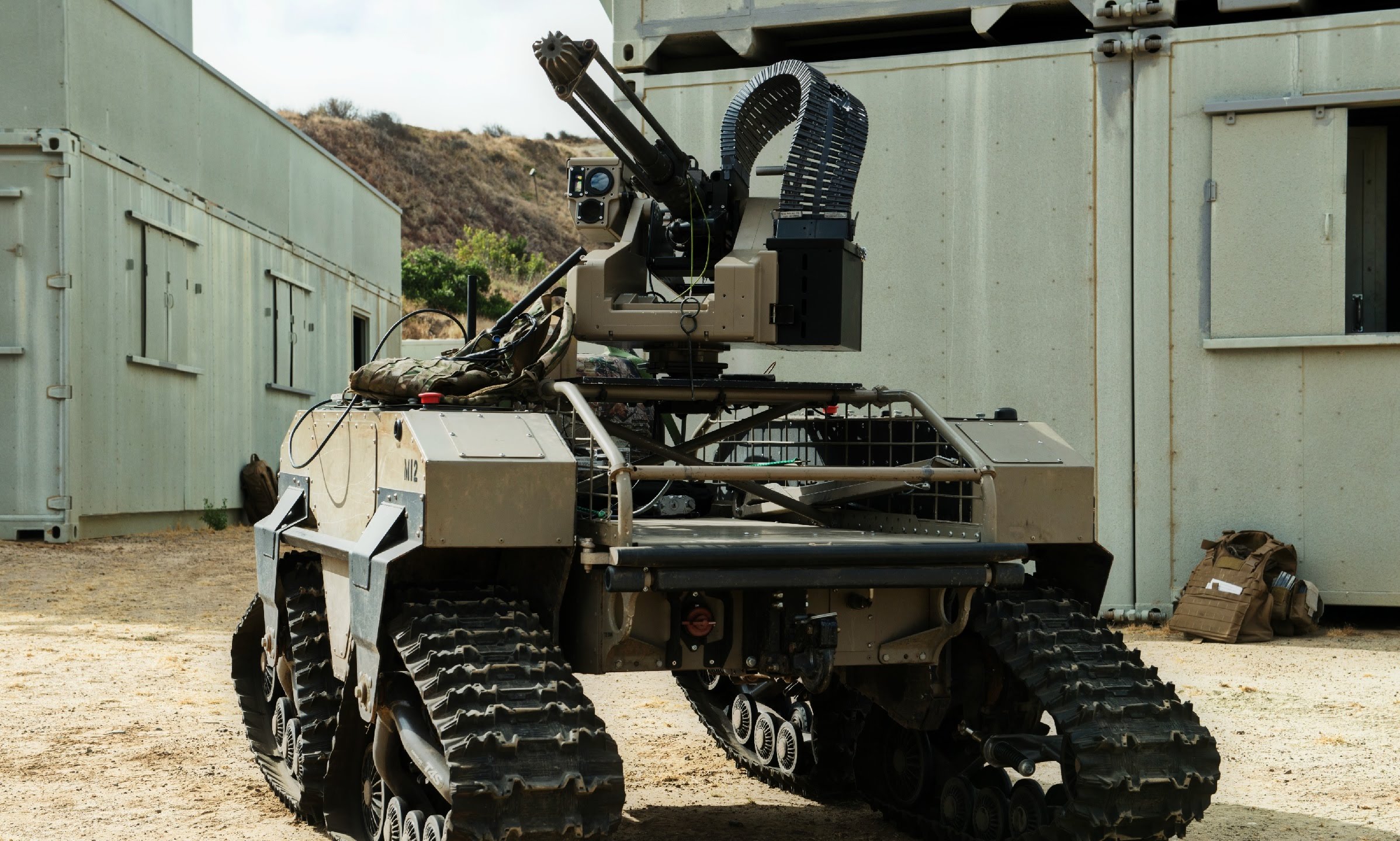
The first samples of military robotics were involved during the Second World War. Since then, these machines have increasingly begun to replace people at the forefront and in intelligence. Who produces robots for the military? What can these robots do besides destroying targets?
We start to understand.
QinetiQ, United Kingdom
The company was formed in 2001, when the UK Department of Defense divided the Defense Assessment and Research Agency (DERA) into two departments. The first was called DSTL (Defense Science & Technology Laboratory). And the second part of DERA, which is responsible for the majority of non-nuclear research, was renamed QinetiQ and prepared for privatization. Now it is a public joint-stock company (PLC), headquartered in Farnborough in the north-east of Hampshire. It has become one of the largest defense companies in the UK.
In 2003, QinetiQ signed a long-term agreement (for 25 years) with the UK Department of Defense. And now the company supplies the British (and not only) army with innovative weapons, including robots.
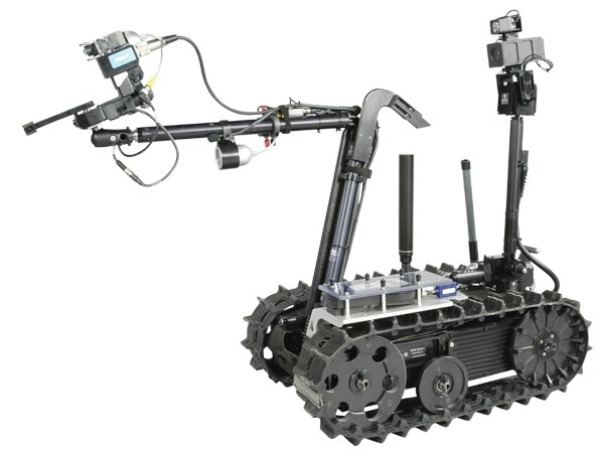
TALON is the name of a robotic platform that serves as a base for creating robots for various purposes. They are called robots of the TALON family. In fact, the authors of the platform are the Foster-Miller company, which was acquired by QinetiQ. The manufacturer claims that it is one of the fastest platforms in production. It can move over rough terrain, overcoming water, snow, sand, natural obstacles. Its weight may vary depending on the task: from 45 kg for combat missions to 27 kg for reconnaissance missions. The modular design allows TALON to be equipped with various sets of sensors, manipulators, tools and weapons. Now the company produces the fifth generation of robots on the TALON platform.
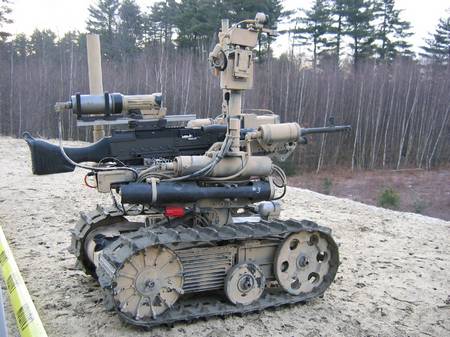
SWORDS (Special Weapons Observation Reconnaissance Detection System) is the first robot from the TALON family to receive lethal weapons. Could be equipped with a rifle M16, or a 5.56-mm M249 SAW machine gun, or a 7.62-mm M240 medium machine gun, or a Barrett M82 semi-automatic rifle with a 12.7x99 mm large-caliber cartridge, or a six-barrel 40-mm grenade launcher of 40 mm or a light four-barreled firearm M202A1 FLASH caliber 66 mm. In 2007, three copies of the M249 machine guns went to Iraq, but were never used. After that, the US Army stopped funding robots and Foster-Miller created a different, more successful configuration - MAARS.
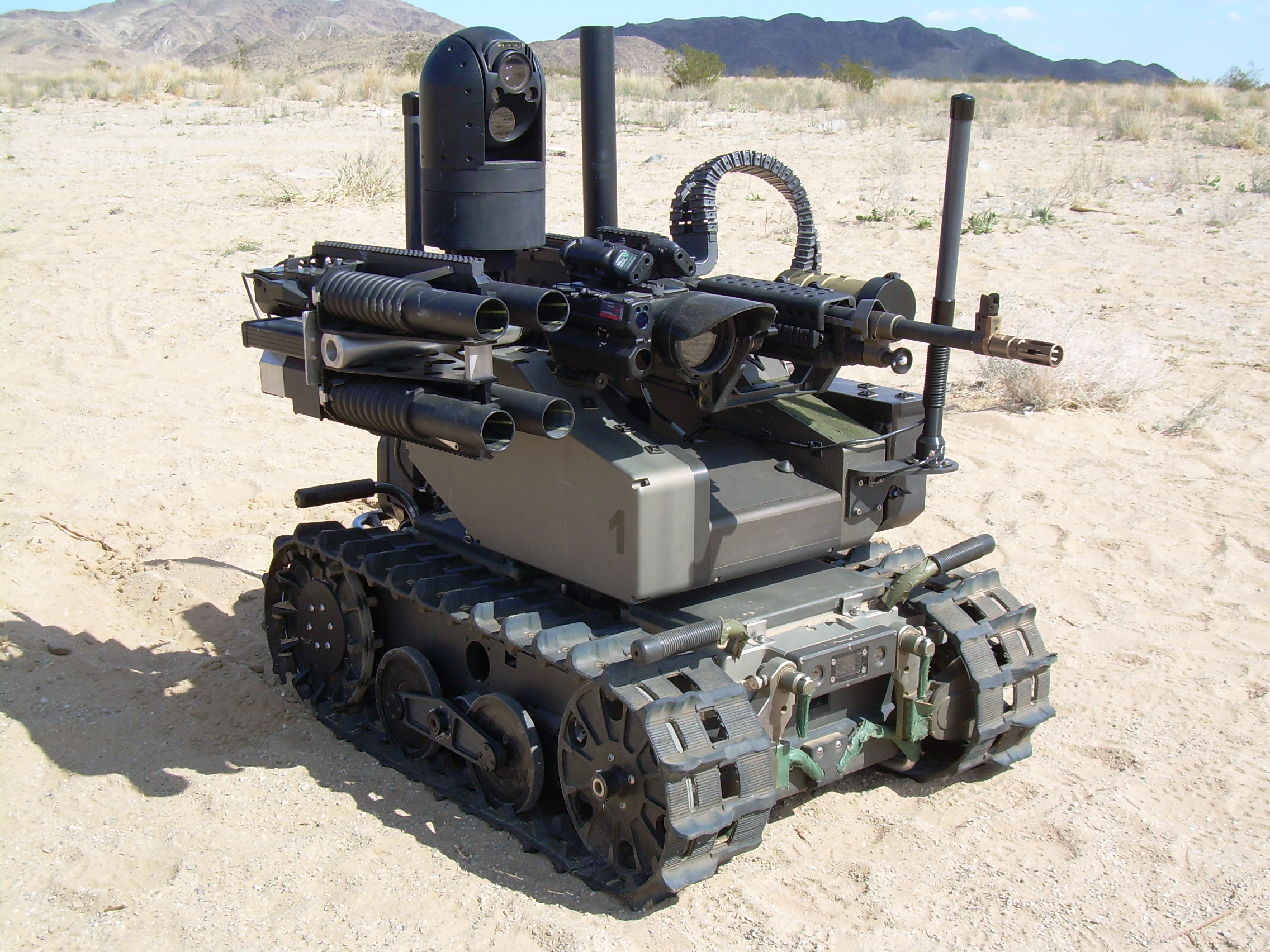
MAARS (Modular Advanced Armed Robotic System) is a robot equipped with lethal weapons, which is designed for “reconnaissance, surveillance, and target acquisition”. The first MAARS was sent to the US Army in June 2008. The US Department of Defense immediately stated that any decision on the use of lethal weapons must come from the person who controls the robot. In the completed version, the robot was equipped with a number of cameras and sensors, a M240B machine gun with 450 7.62 mm rounds of ammunition and four M203 grenade launchers (they could be charged with various grenades, including smoke ones). Weighed construction about 167 kg. In some cases, the robot could be equipped with a loudspeaker, a siren, a laser blinding weapon and a fire detection system. Battery MAARS enough (depending on the intensity of operation) for 3-12 hours.
Boston Dynamics, United States
The company was founded by a group of engineers at the Massachusetts Institute of Technology in 1992 and specializes in engineering and robotics. Funds for the development of projects receives mainly from military sources. In December 2013, Google bought the company, but in March 2016, it decided to sell it because of differences of opinion. Now the owner of Boston Dynamics is a Japanese corporation SoftBank Group.
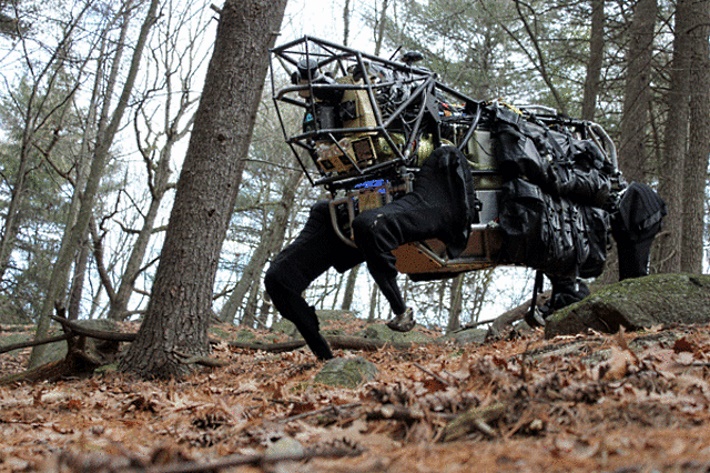
BigDog is the robot that attracted the most attention to Boston Dynamics. Money for the development of this robot gave the Office of promising research projects of the US Department of Defense (DARPA). As planned, this was supposed to be a four-legged robot that helps the US military in carrying weights on the ground, where the tracked platform would be ineffective. The robot turned out to be this way - it was able to carry weight up to 150 kg, climbed up on a hill with a gradient of 35 degrees and walked along with everyone at a speed of 6.4 km / h. The weight of the device itself was 110 kg. It was equipped with a gyroscope, pressure and temperature sensors, a lidar and video cameras. But it worked from an internal combustion engine, which made a very loud noise. Later, the robot was modified - it became AlphaDog and became capable of carrying loads up to 181 kg, passing at the same time 32 km. But the noise of the internal combustion engine did its job - it was because of him that the US Army did not take BigDog into service.
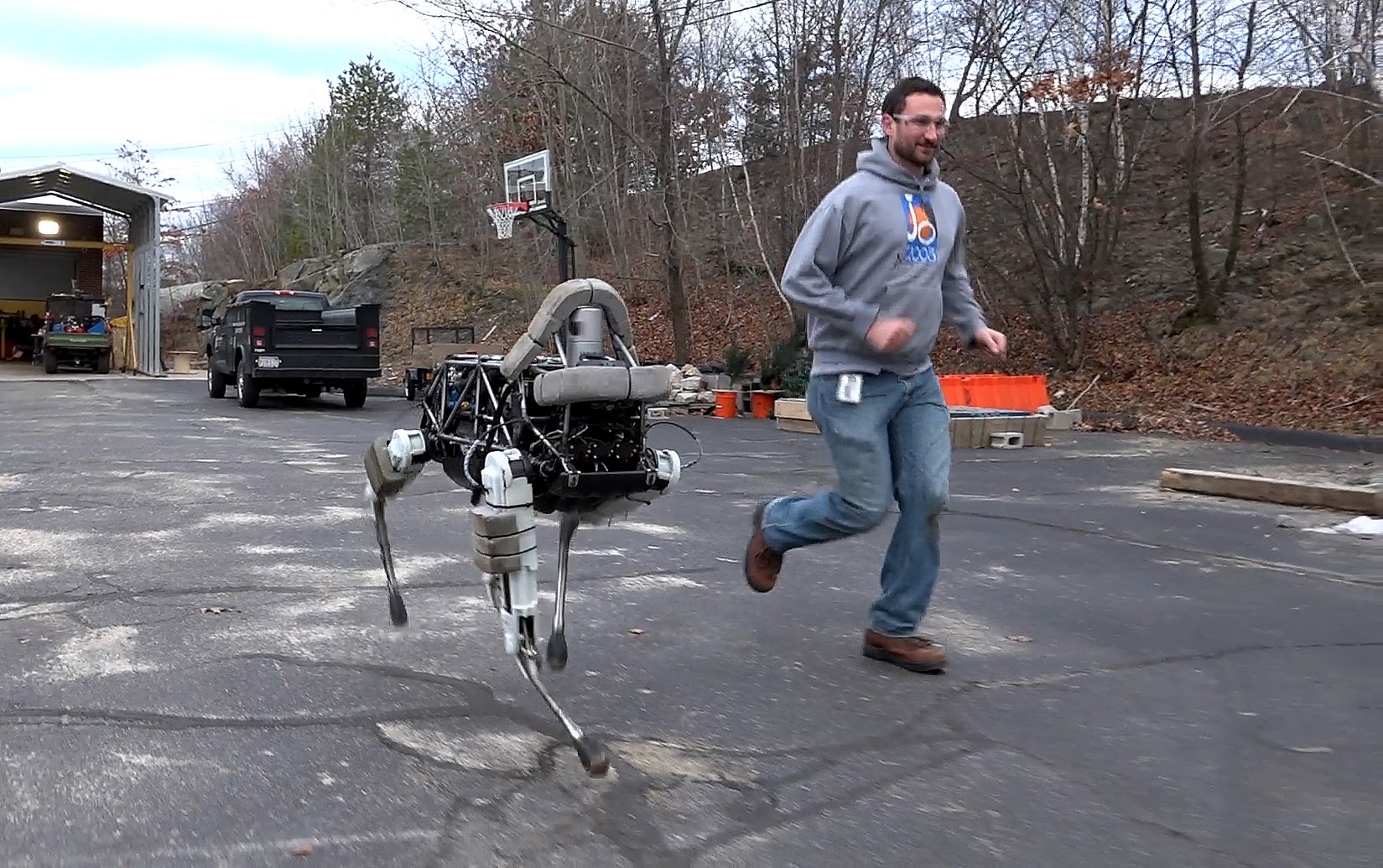
Spot is essentially a modification of BigDog, which differs from its predecessor in its lightweight design and electric motor with battery. The noise level has significantly decreased, but along with it the autonomy and load-carrying capacity of the robot have decreased. Its weight is 75 kg, and it can carry a load of up to 45 kg. There is an even more “trimmed” version - the Spot Mini, which weighs only 25 kg, carries a load of up to 14 kg and can work for about an hour and a half without recharging. It has a 3D-vision system and can be equipped with a hand-manipulator for interacting with objects. This is the most silent robot in the line of Boston Dynamics .
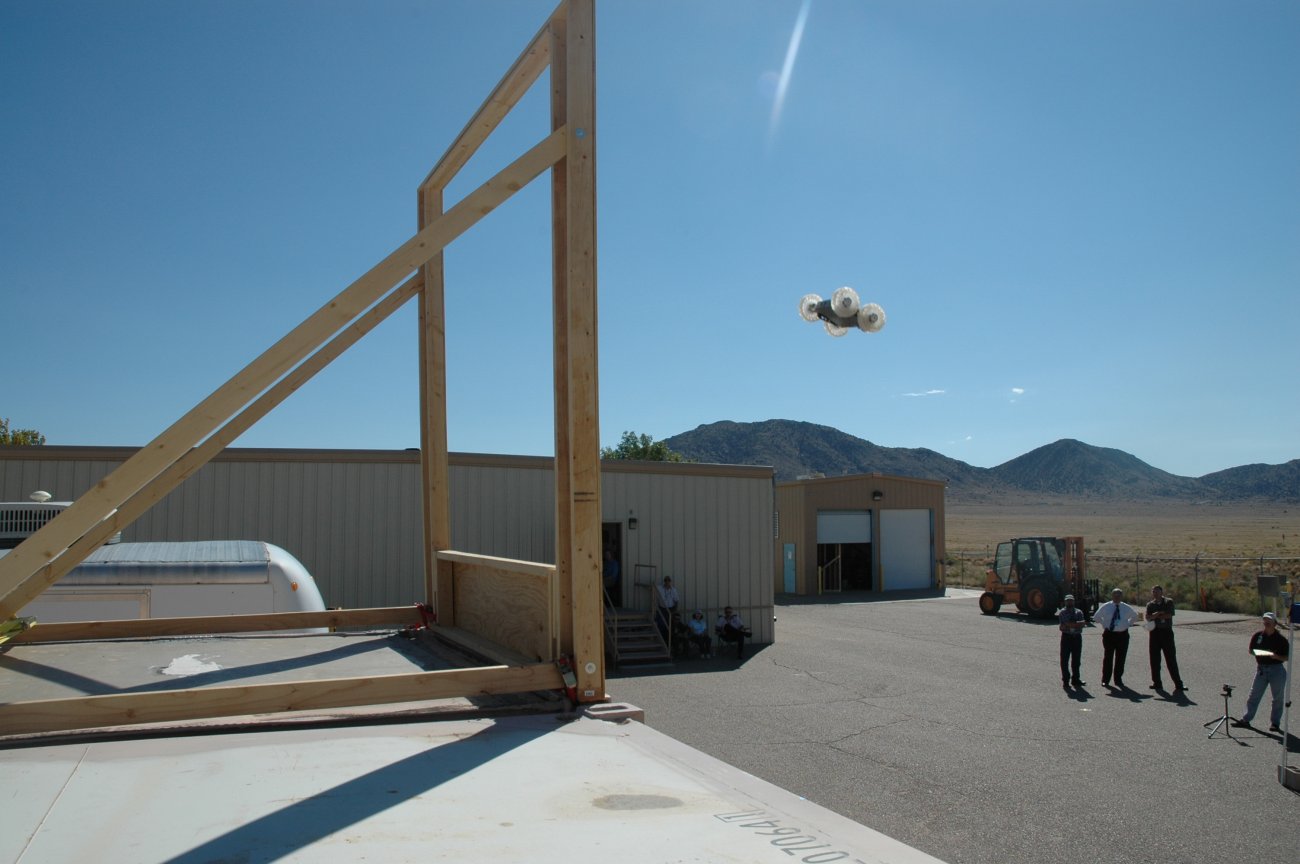
SandFlea is a miniature robot whose name can be translated as “sand flea”. The development was funded by DARPA and JIDO (Joint Improvised-Threat Defeat Organization). The robot weighs 5 kg and is able to jump to a height of up to 9.1 meters. Uses gyrostabilizer in order to remain in a horizontal position during the flight and land properly. It is equipped with cameras, which makes it suitable for carrying out reconnaissance tasks.
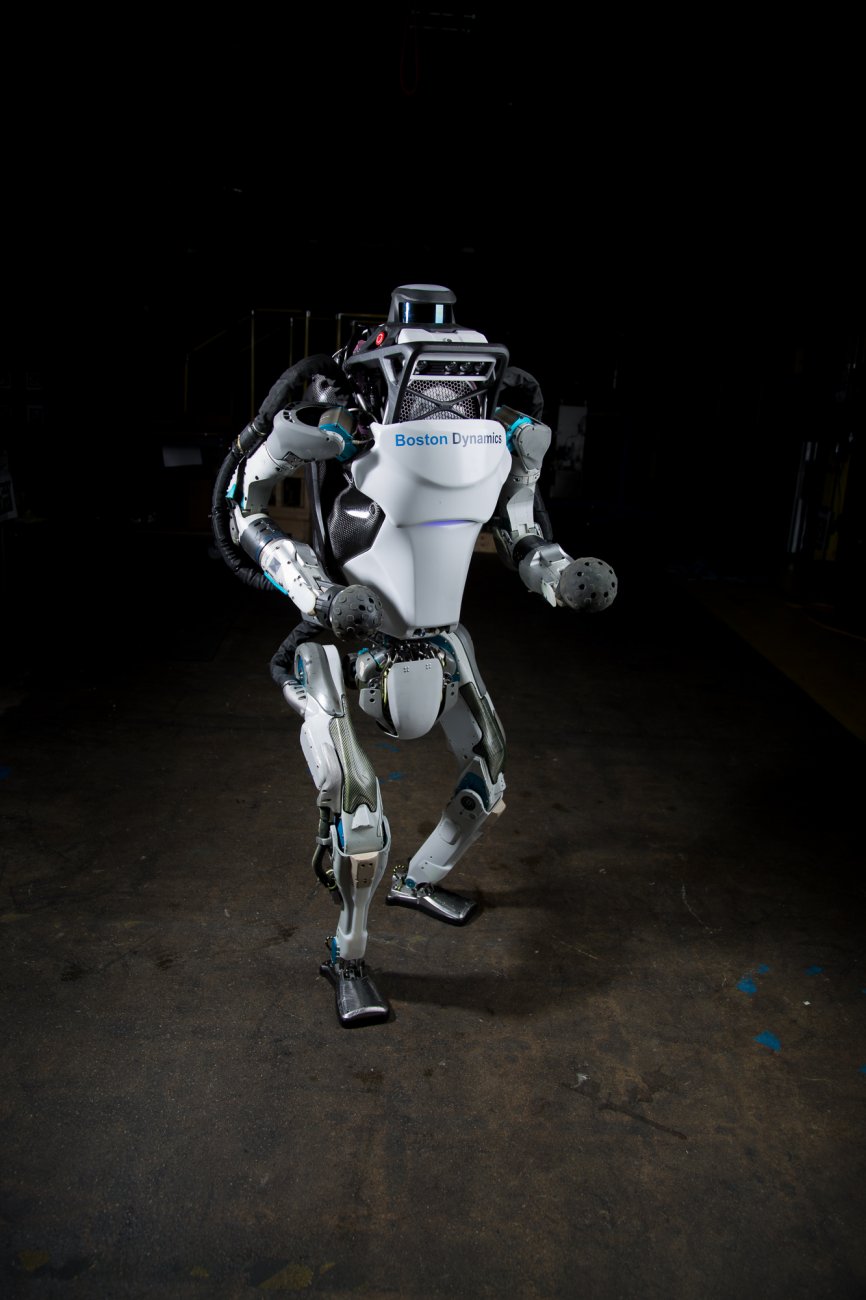
Atlas is a humanoid robot moving on two legs and equipped with manipulators. It is designed to perform a wide range of tasks (including search and rescue) in an environment that is too dangerous for humans: in conditions of increased radiation, chemical contamination, too high or low temperatures. Atlas is able to operate even in difficult terrain with many obstacles, interacting with the environment. Early versions of the robot were distinguished by their high growth - 183 cm, but the modern ones were “shortened” to 150 cm. The weight of the structure was 75 kg. Equipped with a lidar (a system for obtaining information about the environment using light) and a stereoscopic vision system.
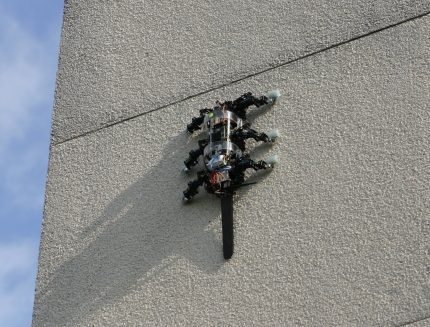
RiSE - the robot-climber. This small six-legged robot with a length of 25 cm and a weight of 2 kg is able to climb on vertical surfaces. He won't be able to climb the smooth walls - he needs a rough textured surface to get hold of. On each of the six legs are small metal hooks to cling to the surface. The peculiarity of the robot is the ability to move not strictly vertically and change direction. To maintain balance, RiSE uses the tail. Limbs are driven by electric motors and controlled by an on-board computer. They have built-in contact and position sensors. The hip joint differential uses a belt drive mechanism, which makes it easy to change gear ratios. The development of the robot is sponsored by the DARPA biodynamics program.

RHex is another six-legged robot from Boston Dynamics, but this time designed to overcome ground obstacles. With a height of 14 cm and a weight of 12 kg, it can be used in search and rescue operations. Equipped with cameras (including IR) and lighting. Works in mud, sand, grass, wetlands and overcomes stones, fallen trees, wires and stairs. The symmetrical design allows you to use a robot, even if it turns over. It is controlled remotely at a distance of 700 meters. Funds for the development of allocated DARPA and the US Army Rapid Equipping Force.
WildCat is the fastest autonomous four-legged robot on the planet. It reaches a speed of 32 km / h (the previous record in 1989 was 21 km / h). Equipped with an engine that runs on methanol and is quite noisy. There are also IMU-sensors, contact sensors, proprioception and visual odometry to control the stabilization of the position during the run. Uses laser finders to determine height. The weight of the robot is 154 kg. The project is sponsored within the framework of the DARPA program “maximum mobility and manipulation”.
OAO Izhevsk Radiozavod, Russia
The radio factory in Izhevsk was established in 1958 and produced radio receivers among the first products. Now it is a high-tech enterprise that develops and manufactures satellite monitoring systems, video surveillance and automation systems, radio navigation and telecommunication equipment, satellite communications equipment and much more.
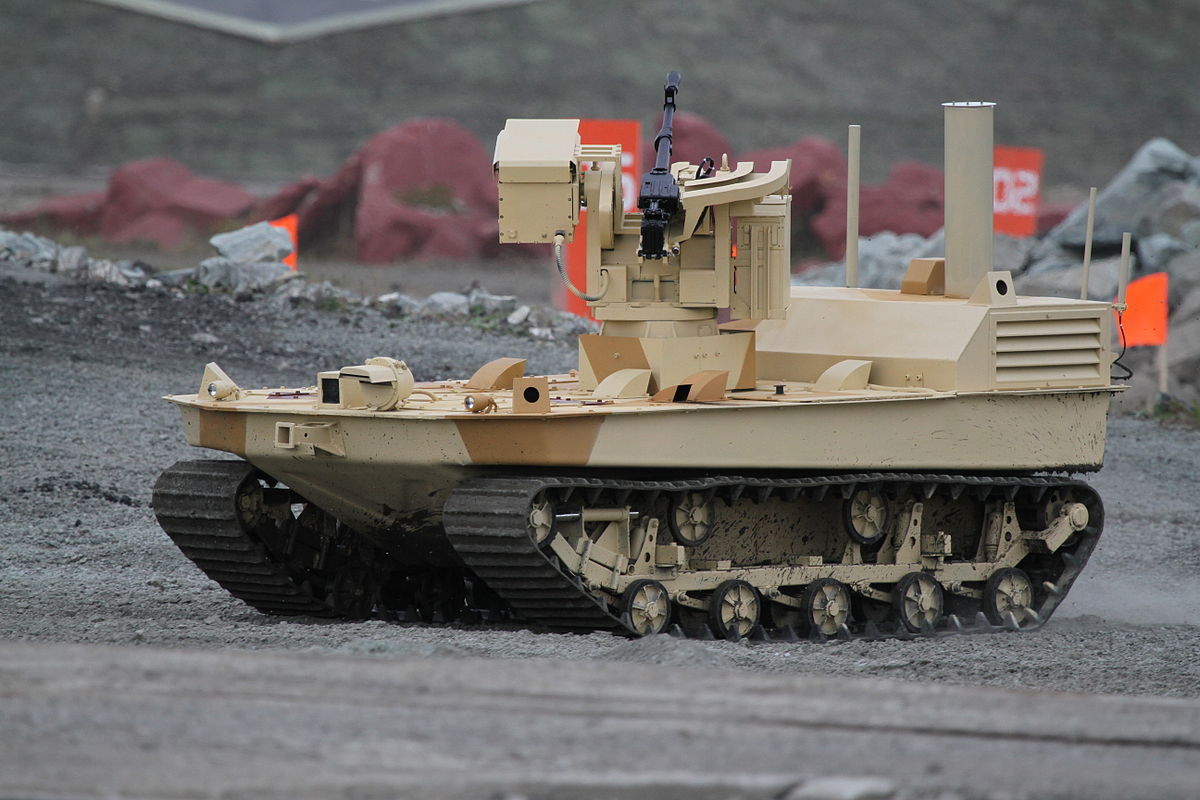
Mobile robotic complex (MRK) - a robotic platform designed for reconnaissance, target detection and fire support. For the first time, RTOs were presented at the Russia ArmExpo exhibition in 2013. In essence, this is the same as TALON from QinetiQ, but the Russian version is clearly larger. The mass of the robotic complex in the equipped state is 1100 kg. It can operate autonomously for up to 10 hours and at the same time pass 250 km. Equipped with Izhevsk MRK machine gun caliber 12.7 mm. Also on the platform can be mounted Kalashnikov tank gun (7,62 mm caliber) or AG-17A and AGS-30 30 mm caliber grenade launchers. In addition, it is equipped with a laser range finder, gyrostabilizers of the weapon platform, a thermal imager and a ballistic computer for firing at any time of day in all weather conditions. The turntable, equipped with video cameras (including IR), provides for the capture and maintenance of ten targets simultaneously. The complex can perform tasks at a distance of up to 5 km from the operator at temperatures from -40 ° C to + 40 ° C. It was developed together with OAO NPK UralVagonZavod.
Continuation of the review
All Articles